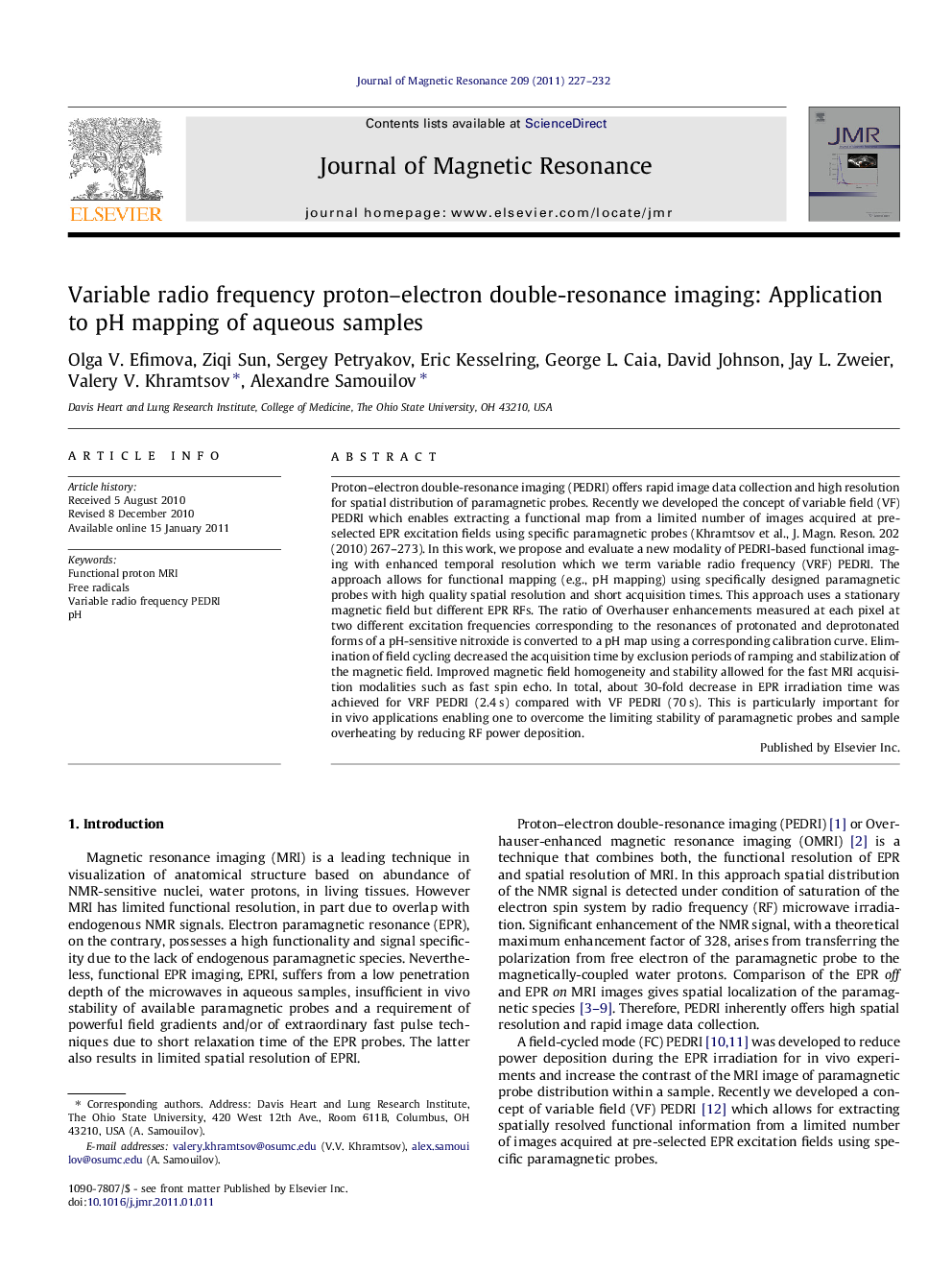| Article ID | Journal | Published Year | Pages | File Type |
|---|---|---|---|---|
| 5406373 | Journal of Magnetic Resonance | 2011 | 6 Pages |
Proton-electron double-resonance imaging (PEDRI) offers rapid image data collection and high resolution for spatial distribution of paramagnetic probes. Recently we developed the concept of variable field (VF) PEDRI which enables extracting a functional map from a limited number of images acquired at pre-selected EPR excitation fields using specific paramagnetic probes (Khramtsov et al., J. Magn. Reson. 202 (2010) 267-273). In this work, we propose and evaluate a new modality of PEDRI-based functional imaging with enhanced temporal resolution which we term variable radio frequency (VRF) PEDRI. The approach allows for functional mapping (e.g., pH mapping) using specifically designed paramagnetic probes with high quality spatial resolution and short acquisition times. This approach uses a stationary magnetic field but different EPR RFs. The ratio of Overhauser enhancements measured at each pixel at two different excitation frequencies corresponding to the resonances of protonated and deprotonated forms of a pH-sensitive nitroxide is converted to a pH map using a corresponding calibration curve. Elimination of field cycling decreased the acquisition time by exclusion periods of ramping and stabilization of the magnetic field. Improved magnetic field homogeneity and stability allowed for the fast MRI acquisition modalities such as fast spin echo. In total, about 30-fold decrease in EPR irradiation time was achieved for VRF PEDRI (2.4Â s) compared with VF PEDRI (70Â s). This is particularly important for in vivo applications enabling one to overcome the limiting stability of paramagnetic probes and sample overheating by reducing RF power deposition.
Graphical abstractDownload high-res image (128KB)Download full-size imageResearch highlights⺠Variable radio frequency (VRF) PEDRI allowed functional mapping using paramagnetic probes. ⺠pH mapping using VRF PEDRI was performed with pH-sensitive imidazoline nitroxide. ⺠Mapping required three acquisitions, one EPR off and two EPR on. ⺠Acquisition time was 6.8 s and EPR irradiation time was 4.8 s. ⺠Spatial resolution of 1.56 mm and functional resolution of 0.1 pH units were achieved.
